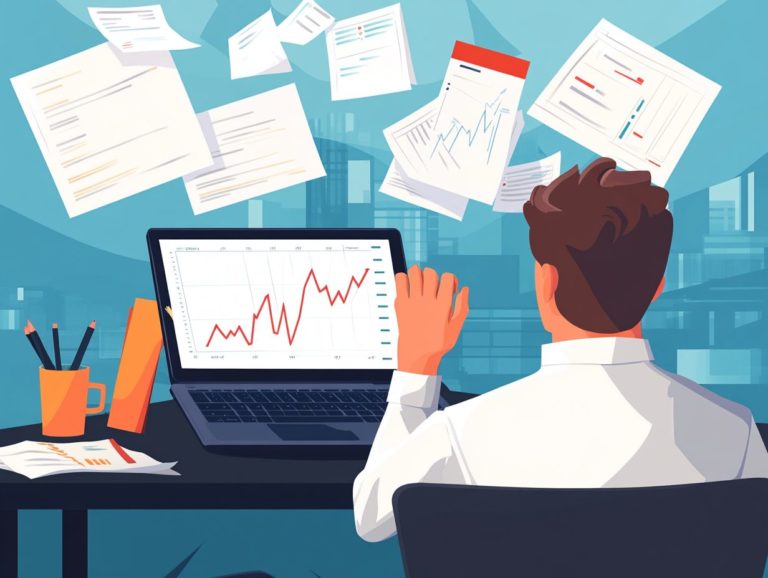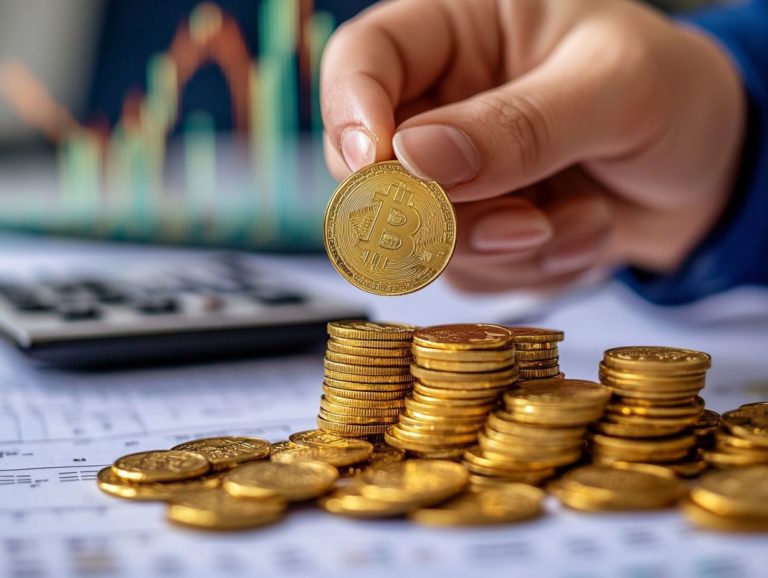5 Key Indicators for Silver Investment Success
As interest in precious metals surges, silver emerges as a particularly appealing investment choice for you.
This article delves into five key indicators that will guide you toward successful silver investment. Get ready to dive into current market trends, industrial demand, global economic conditions, and government regulations all of which play a crucial role in influencing silver s value.
We will also discuss the benefits and risks, along with various investment methods, ensuring you are thoroughly equipped to make informed decisions in the ever-evolving landscape of silver investment.
Contents
- Key Takeaways:
- 1. Current Market Trends
- 2. Industrial Demand for Silver
- 3. Global Economic Conditions
- 4. Government Policies and Regulations
- 5. Supply and Demand Dynamics
- What Are the Benefits of Investing in Silver?
- Frequently Asked Questions
- What are the 5 key indicators for silver investment success?
- How does market demand affect silver investment success?
- Why is industrial usage important for silver investment success?
- How does inflation impact silver investment success?
- Why is currency value a key indicator for silver investment success?
- How do global economic conditions play a role in silver investment success?
Key Takeaways:
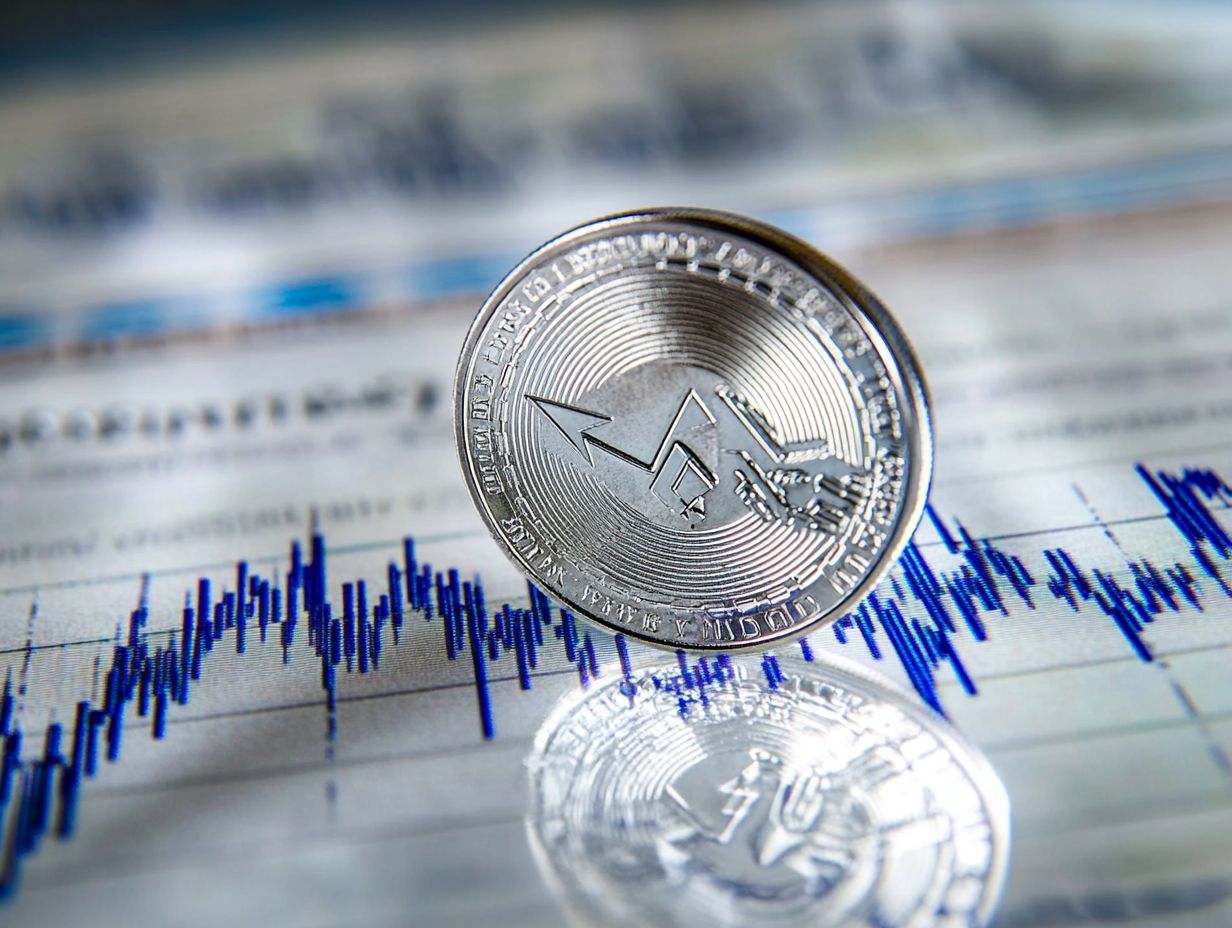
- Stay updated on current market trends to make informed decisions when investing in silver.
- Consider industrial demand for silver as it can impact the overall market for the metal.
- Monitor global economic conditions to understand how they can affect the price and demand for silver.
1. Current Market Trends
The current market trends for precious metals, such as silver, are shaped by various factors, including the intricate dance of supply and demand, geopolitical tensions, and investment strategies that influence price movements and market volatility.
These elements provide you with valuable insights as a financial trader or investor. Specifically, fluctuations in the currency markets and rising inflation rates have further affected silver prices, making it an appealing way to protect your investment.
Technical analysis is vital for forecasting future price movements; you ll find that traders meticulously examine chart patterns and historical data to inform their decisions.
Geopolitical conflicts think trade disputes or military tensions can introduce uncertainty, prompting investors to seek refuge in safe-haven assets like silver during turbulent times. Market indicators shape spot prices and inform long-term investment trends, ultimately directing the actions of financial participants like yourself.
2. Industrial Demand for Silver
The industrial demand for silver has experienced a remarkable surge, thanks to its pivotal role in technological advancements. This includes crucial applications in solar panels and medical equipment, showcasing silver’s value beyond its traditional status as a safe-haven asset.
This trend is strong in renewable energy sectors, where silver is essential for optimizing solar energy systems, and in healthcare, where its antimicrobial properties are vital for various medical devices and treatments.
As these industries continue to grow, the importance of sustainable mining practices cannot be overstated. Eco-friendly extraction methods minimize environmental impact and reshape market dynamics by catering to the increasing consumer demand for ethically sourced materials.
As a result, companies that embrace these sustainable practices may find themselves strategically positioned to seize the burgeoning interest in sustainability, amplifying the demand for silver in an increasingly conscience-driven economy.
3. Global Economic Conditions
Global economic conditions play a crucial role in determining your investment potential in precious metals. Factors such as inflation trends, interest rates, and the performance of currencies like the US Dollar and Euro significantly influence market stability and investor behavior.
As inflation rises in key economies, such as Germany and the UK, the appeal of silver and similar assets often grows. Investors like you tend to seek safe havens to preserve wealth during such times.
This inclination is further heightened by falling interest rates, which decrease the opportunity cost of holding non-yielding assets like precious metals. Consequently, the interplay between rising inflation and low interest rates creates a favorable environment that typically boosts overall demand for these investments.
Additionally, geopolitical factors and local economic policies in these regions can further impact your readiness to allocate resources into silver, thereby shaping broader market dynamics.
4. Government Policies and Regulations
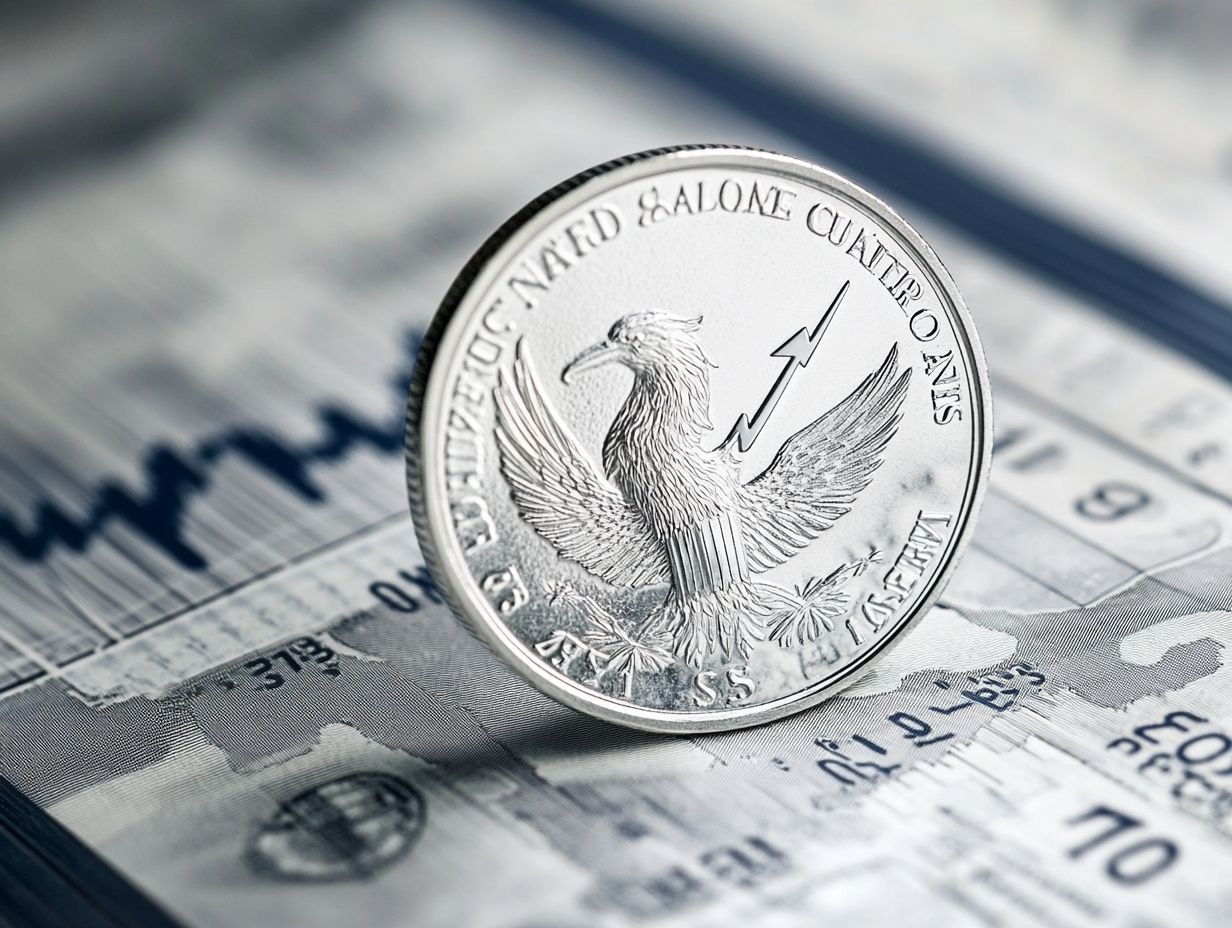
Government policies and regulations play a pivotal role in shaping the precious metals market, impacting everything from sustainable mining practices to the availability of investment vehicles. This, in turn, influences how you approach silver trading.
For example, stringent environmental regulations can drive up operational costs for miners, potentially leading to a decrease in silver supply. On the flip side, pro-mining legislation can stimulate production, providing an advantageous landscape for investors eager to take advantage of price changes.
Policies around trade tariffs and international agreements can either enhance or restrict the accessibility of silver in global markets, ultimately affecting the decisions you make. As an investor, you must adeptly navigate this intricate landscape, evaluating how shifting regulations can unveil new opportunities while also presenting unexpected challenges.
5. Supply and Demand Dynamics
Understanding the dynamics of supply and demand is essential for you as an investor aiming to capitalize on price movements in the silver market. The fluctuations in this arena can often reveal underlying trends and highlight investment potential.
By closely monitoring the factors that drive these fluctuations such as mining production levels, geopolitical events, and shifts in industrial demand you can gain valuable insights into possible price trajectories. External factors like currency strength and interest rates also add layers of complexity to the landscape.
Utilizing market analysis tools and economic reports will give you the power to make well-informed decisions. Keeping a watchful eye on the overall market trends of precious metals offers valuable context, enabling you to devise a more comprehensive strategy for effective investment engagement.
What Are the Benefits of Investing in Silver?
Investing in silver opens up exciting opportunities that you won’t want to miss! One of the key advantages is its reputation as a safe-haven asset. You have the potential for long-term appreciation, along with the chance to diversify your portfolio through various investment vehicles tailored to your risk tolerance.
Many investors regard silver as a dependable shield during economic downturns and inflationary periods, as its value tends to remain stable or even increase. If you re inclined towards a more tactile experience, acquiring physical silver in the form of coins and bars offers a tangible option.
On the other hand, if liquidity is more your style, silver ETFs (Exchange-Traded Funds) or mutual funds could be the way to go. For those with a bit more experience, futures contracts provide an exciting avenue to capitalize on silver price fluctuations.
With these diverse options at your disposal, protecting yourself against market volatility is not just a possibility; it s an achievable goal for both newcomers and seasoned investors alike.
What Are the Different Ways to Invest in Silver?
Investing in silver offers a variety of avenues, from physical assets like coins and small bars to modern alternatives such as silver-backed ETFs and digital precious metals, that cater to what you want.
If you value tangible assets, investing in physical silver can provide a reassuring sense of security and ownership, though you’ll need to navigate challenges like storage costs and liquidity issues.
Conversely, silver ETFs present a convenient option, allowing for seamless trading on stock exchanges perfect for active investors. However, be mindful of management fees that can nibble away at your returns.
Digital options bring flexibility and accessibility to the table, appealing to those who are tech-savvy. Always remember to assess risks, especially with digital options, as they come with their own set of challenges, particularly concerning cybersecurity and online platforms.
By understanding these diverse methods, you can tailor your silver investment choices to align perfectly with your overall financial strategies.
What Are the Risks of Investing in Silver?
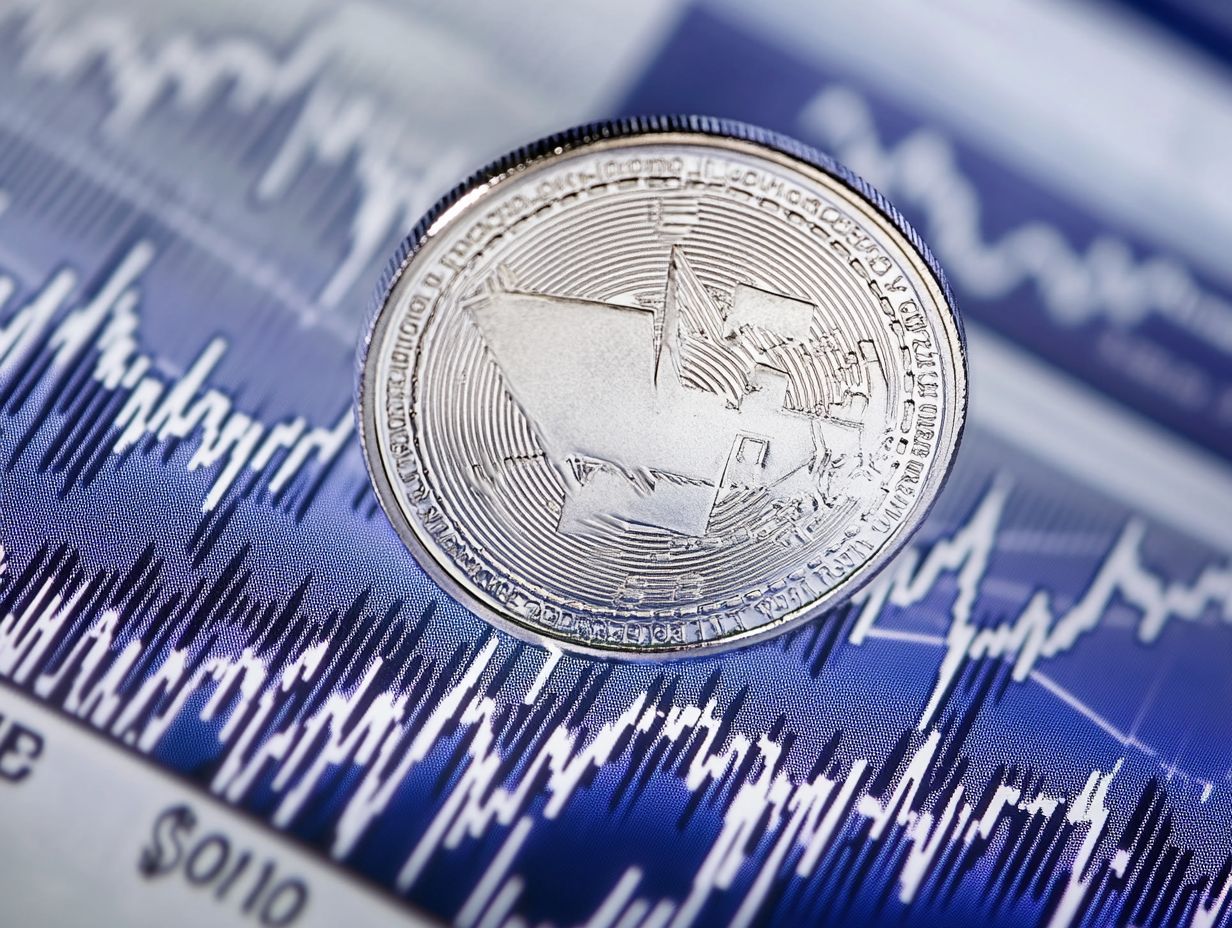
Investing in silver comes with unique risks, including market volatility and price fluctuations. These uncertainties can greatly influence your returns.
Fluctuations can arise from several factors such as geopolitical tensions, shifts in industrial demand, and economic indicators. This ever-changing landscape means that even seasoned investors may encounter unexpected downturns.
Take charge of your investment with smart risk management techniques. You may also want to diversify your holdings across various asset classes and use stop-loss orders to limit potential losses.
Regularly reviewing market conditions keeps you ahead of emerging trends. By doing so, you can reduce your exposure to significant financial setbacks.
How Can One Determine the Right Time to Invest in Silver?
Finding the optimal moment to invest in silver requires careful analysis of market indicators and an understanding of the gold-silver ratio, which describes the price relationship between gold and silver.
To navigate the silver market confidently, consider using technical analysis tools like moving averages and the Relative Strength Index (RSI). These tools offer valuable insights into market trends.
It’s crucial to keep an eye on economic releases and geopolitical events, as they can influence investor sentiment and price changes. By monitoring trade volumes, you can identify shifts in market momentum and seize opportunities as they arise.
Combining these analytical strategies enables you to make informed decisions and develop effective investment approaches.
What Are the Factors to Consider Before Investing in Silver?
Before investing in silver, consider various factors like global economic conditions and market demand trends. Understand how these elements shape investor behavior in the precious metals market.
Evaluate the effects of inflation, interest rates, and geopolitical stability, as these factors can significantly impact silver prices. Being aware of these economic influences is essential for your investment strategy.
Reflect on your risk tolerance and time horizon, as these will shape your approach to leveraging silver s potential. Examining historical trends in the silver market can provide insights to enhance your decision-making.
How Can One Diversify Their Silver Investment Portfolio?
Diversifying your silver investment portfolio is vital for risk management and leveraging market fluctuations. This allows you to adopt various strategies that align with your financial goals.
Incorporating a mix of physical silver, like coins and bars, along with silver exchange-traded funds (ETFs), helps create a balanced portfolio. The tangible nature of physical silver offers security, while ETFs provide liquidity and ease of trading.
Exploring digital silver options adds flexibility to your strategy. This combination not only enhances your growth potential but also serves as a buffer against volatility. If one segment underperforms, others can compensate, helping you build a stronger financial foundation.
Frequently Asked Questions
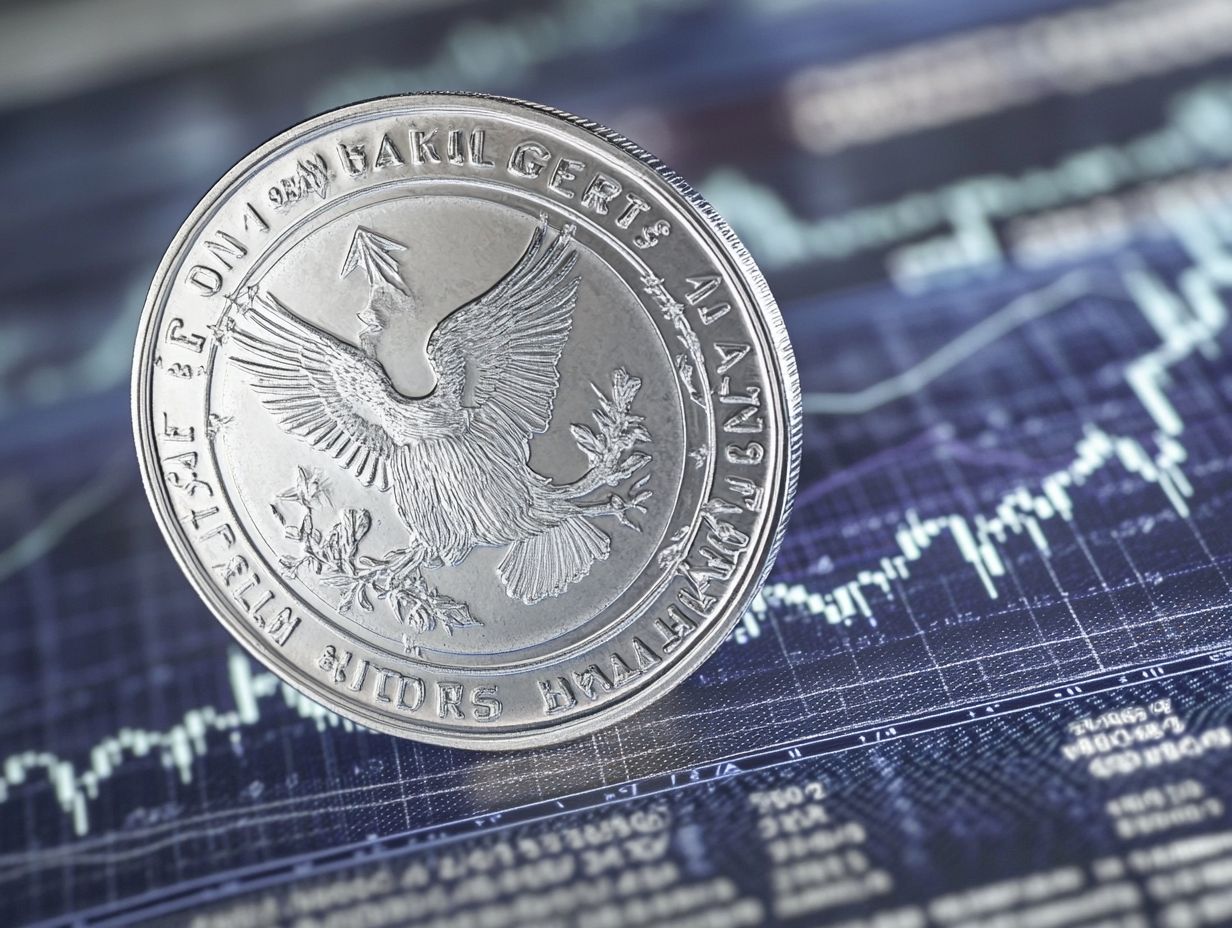
What are the 5 key indicators for silver investment success?
The 5 key indicators for silver investment success include:
- Market Demand: The need for silver in various industries.
- Industrial Usage: Silver’s role in technology and manufacturing.
- Inflation: The impact of rising prices on silver’s value.
- Currency Value: How changes in currency affect silver prices.
- Global Economic Conditions: The overall economic landscape influencing silver investment.
Stay informed and consult a financial advisor before making any investment decisions!
How does market demand affect silver investment success?
Market demand is vital for silver investments. It influences price and availability. High demand means better investment prospects, while low demand can lead to lower returns.
Why is industrial usage important for silver investment success?
Silver plays a crucial role in industries like electronics and jewelry. Increased industrial usage drives up silver’s value, making it a promising investment.
How does inflation impact silver investment success?
Inflation is when prices rise over time. As currency value falls, investors often seek silver to protect their wealth, pushing up its price.
Why is currency value a key indicator for silver investment success?
The value of currency directly impacts silver prices since it’s traded in US dollars. When currencies weaken, silver prices typically rise, benefiting investors with stronger currencies.
How do global economic conditions play a role in silver investment success?
Global economic conditions greatly affect silver demand and prices. A strong economy can increase silver demand, while downturns might present unique investment opportunities as people seek safe havens.













